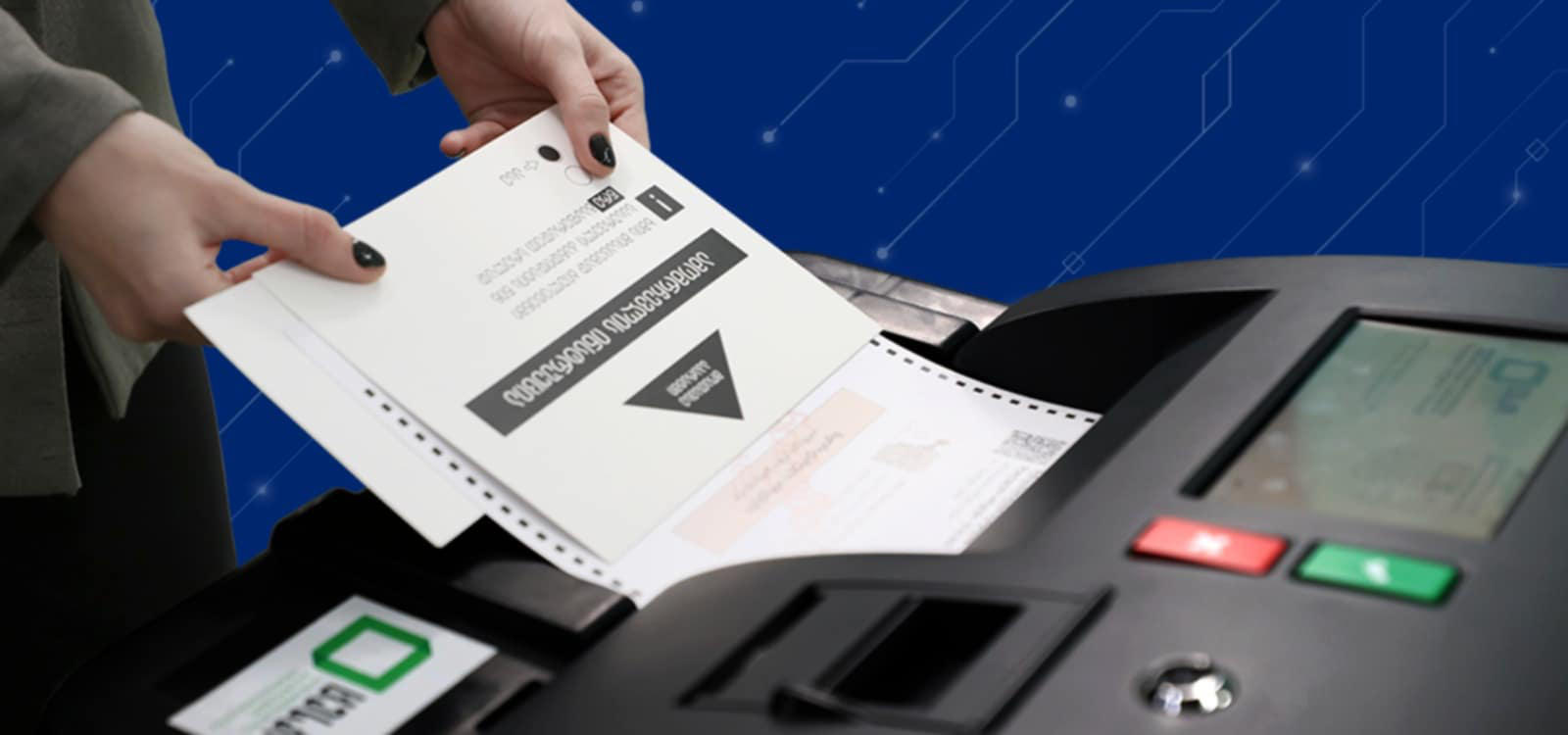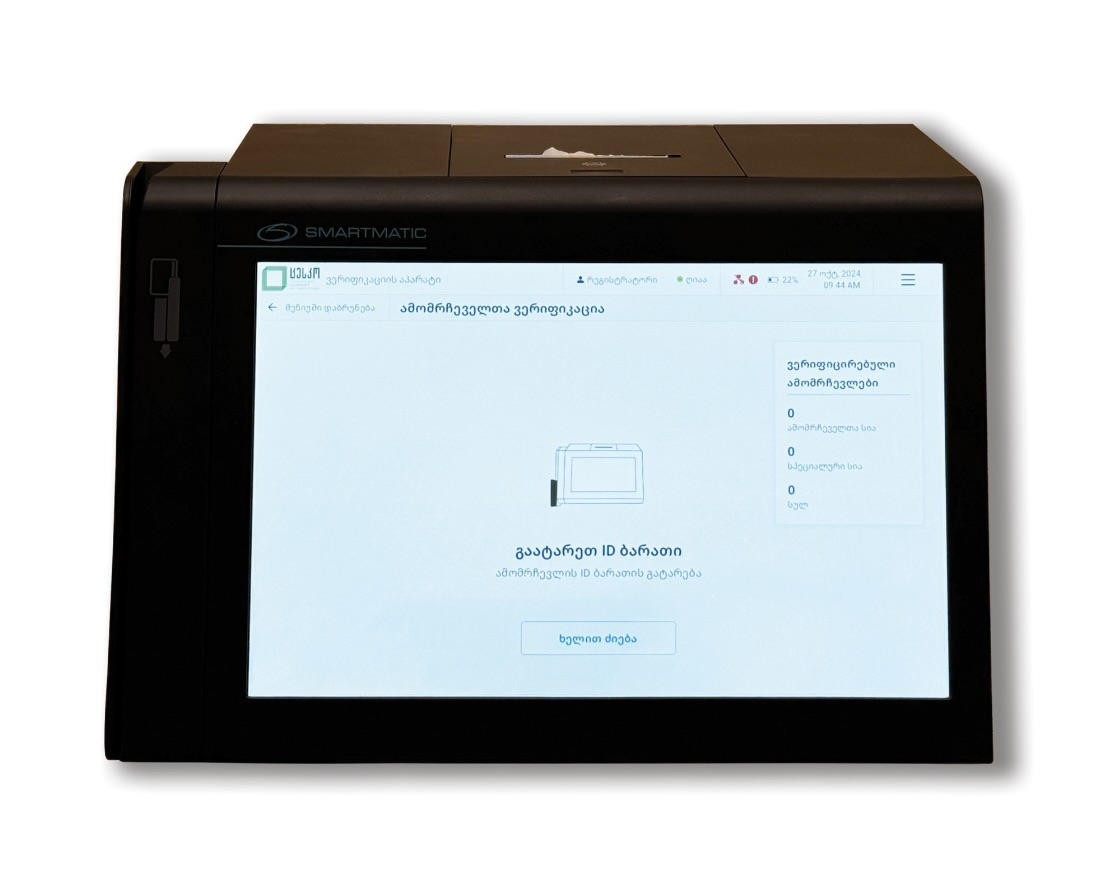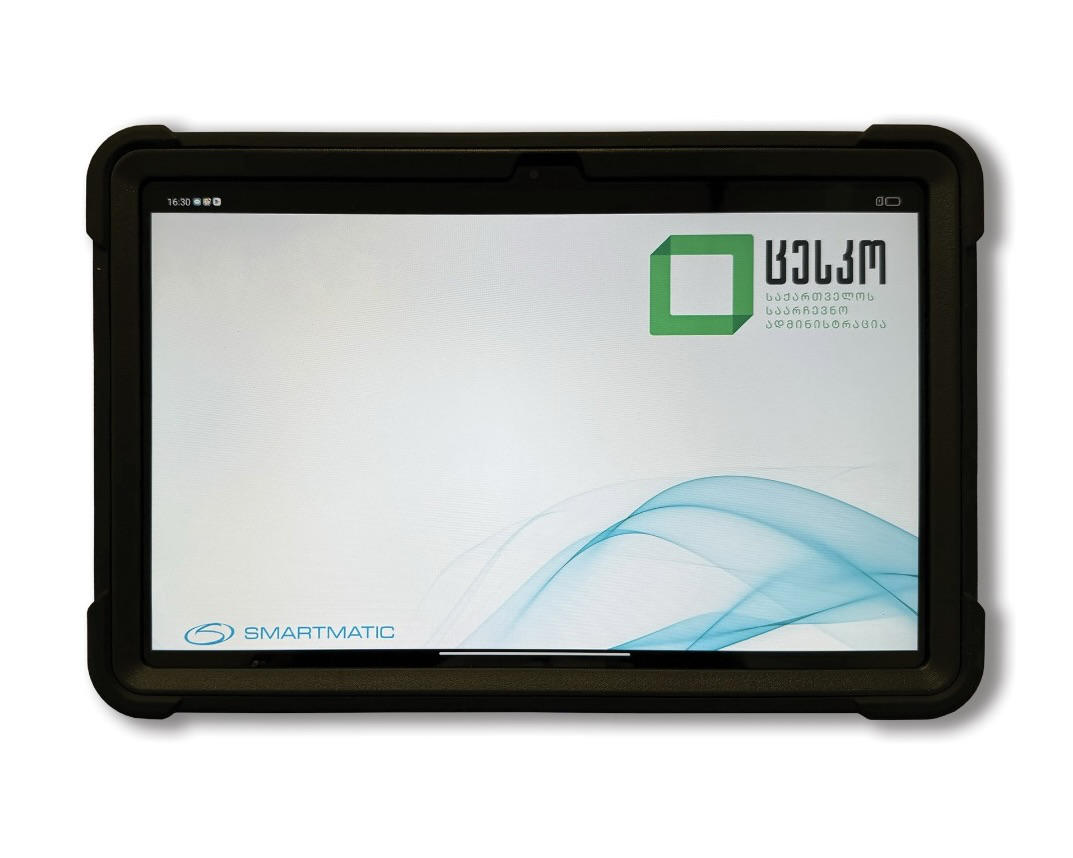Electronic Voting in Georgia - Must-Knows about Upcoming Elections

Georgia is going to embrace the October 26, 2024, parliamentary elections with a significant change – the Central Election Commission (CEC) projects that over 90%, i.e., more than three million voters, will cast their ballots electronically at polling stations. According to the new procedures and regulations, electronic voting will be implemented in 2263 of the 3031 stations across the country and voters will vote using electronic technologies. however, e-voting will not be available at polling stations in hard-to-reach/remote areas, at those located aboard, and at stations that are set up under exceptional circumstances.
The use of electronic technologies in the upcoming parliamentary elections will consist of three key components of election management: voter registration at polling stations will be conducted using Voter Identification Unit (VIU); Precinct Count Optical Scanning technology (PCOS) will be used throughout the voting process; and the ballot results will be transmitted from polling stations to the CEC through the special results management system.
This article provides an overview of the specifics of e-voting system, highlighting the new technologies and procedures that Georgian citizens will encounter for the first time. It also addresses basic concerns regarding the security and confidentiality of the vote.
E-Voting
E-voting refers to the integration of digital technologies at various states of the electoral process, including voter verification, voting, ballot counting, data transfer, result tabulation, and the publication of voting results. The use of digital technologies in elections is either fully or partially implemented in almost all countries worldwide.
There are two primary technological approaches for voter verification: one based on biometric data (such as fingerprints, facial recognition, or eye scans), and another based on personal identification documents (such as passport or ID cards).
There are several technological solutions for the voting itself: Direct Recording Electronic (DRE) technology – where voters casts their vote by pressing a finger on the voting device, sensor screen, or button; Optical Mark Recognition (OMR) technology – where voters mark a paper ballot that is then scanned by a ballot reading device; and Internet voting (i-Voting) technology – which allows voting to occur remotely via a secure election portal without the need to visit a polling station. Each country determines which technologies to use based on its political and socio-economic context. Currently, OMR and DRE voting technologies remain the most frequently used e-voting technologies.
Voter Registration
 The first significant change voters will encounter at the polling stations is the elimination of the printed voters’ list, previously known as the “table list,” which they would sign before receiving their ballots. Instead, voters will now register using a voter verification device. Each polling station will be equipped with multiple verification devices, allowing voters to register with any available registrar, thus eliminating the need for queues organized by surname initials.
The first significant change voters will encounter at the polling stations is the elimination of the printed voters’ list, previously known as the “table list,” which they would sign before receiving their ballots. Instead, voters will now register using a voter verification device. Each polling station will be equipped with multiple verification devices, allowing voters to register with any available registrar, thus eliminating the need for queues organized by surname initials.
To register, voters must present their ID cards to the registrar, who will scan it using the digital card reader on the verification device. The device will then identify the voter and display their personal information, including a photograph, on the screen. If a voter presents a passport or a damaged ID card, the registrar will manually input the voter’s number to complete the verification process.
Once the voter’s data is verified, the device will print a registration receipt containing the voter’s personal details. The voter will then sign the receipt to confirm their participation in the election. After this, the voter will undergo the standard marking procedure and be provided with a new type of special ballot.
The verification device will reject registration if the voter is registered at a different polling station or has already cast their vote. In cases where a voter attempts to vote again, the device will automatically cancel the registration and trigger an alarm.
All devices at the polling station are interconnected through internal network cables to ensure secure data exchange and synchronization. As soon as a voter is registered on one device, this information is immediately reflected on all other devices. It must be noted that voter verification devices are not connected to the internet, ensuring that external access or manipulation of their data is impossible.
Once the voting process is completed, the total number of voters who participated in the election will be printed from the verification devices.
Voting
 As previously mentioned, after registration, voters are provided with a special ballot printed on thick paper approximately the size of an A4 sheet, secured with both a unique barcode and a QR code. The QR code on the ballot contains information specific to the election district and polling station, ensuring that the ballot cannot be used at a different polling station. Ballot will not have individual serial numbers, making it impossible to trace them back to specific voters.
As previously mentioned, after registration, voters are provided with a special ballot printed on thick paper approximately the size of an A4 sheet, secured with both a unique barcode and a QR code. The QR code on the ballot contains information specific to the election district and polling station, ensuring that the ballot cannot be used at a different polling station. Ballot will not have individual serial numbers, making it impossible to trace them back to specific voters.
When issuing the ballot, the registrar will explain the voting procedure in detail to the voter. To help voters remember the procedure, they will be instructed to fill in a test circle printed on the ballot. Along with the ballot, voters will also receive a secrecy sleeve to ensure the secrecy of their vote.
To vote correctly, voters must fill in the circle corresponding to their preferred election subject while in the polling booth. Unlike the previous method of circling the election number, voters are now required to fill in the circle that contains both the name and number of the election subject, as the vote-counting device can only read marks made within the circle. The device will not recognize any marks or circling outside the circle, and such ballots will be considered invalid. Furthermore, if more than one circle is filled in, the ballot will also be invalidated. Voters must use the special marking-pen provided in the polling booth to ensure the device can read their selection.
After filling in the circle for their chosen election subject, the voter places the ballot in the special envelope to protect their vote from being seen when leaving the booth. The voter then approaches the counting device and inserts the ballot into it.
To prevent long lines, standard polling stations will be equipped with two counting devices, with some larger stations having up to three. Voters can insert their ballots into any available counting device. The vote-counting devices use optical mark recognition (OMR) technology to accurately read the voter's choice. These devices are integrated with the ballot box, automatically placing the ballot in the box after reading the marked choice.
To compile the results, vote-counting devices are interconnected via internal network cables, but they are not connected to the Internet at any stage of their operation. They are also not equipped with wireless modules such as Wi-Fi, Bluetooth, or RFID, ensuring that remote access to the device's software is impossible, thereby protecting the system from cyberattacks. In short, the devices are highly secure and resistant to hacking.
The vote-counting devices fully ensure the secrecy of the vote, making it impossible to identify which voter cast a particular ballot. Since the vote-counting devices are not connected to the voter verification devices, there is no way to link a ballot to an individual voter. Additionally, to further ensure anonymity, the device does not store ballot data in the order in which it was cast. After each ballot is submitted, the device shuffles the data, making it impossible to determine when a particular ballot was entered.
Vote Count
Once the voting process at a polling station is completed, the Chair of the Precinct Election Commission (PEC) officially closes the voting session on the voting machines. Immediately after the session is closed, the devices exchange data with one another, and one of the machines prints the consolidated voting results.
These results are printed as a receipt on thermal paper in two copies, both of which are signed by the Chair and the Secretary of the Commission. One copy is stored as part of the official polling station records, while the second copy is publicly displayed at the polling station. For the October 26, 2024, parliamentary elections, the results printed from the vote-counting device will be considered preliminary. The results will only become legally binding after the ballots are manually counted and a formal voting results summary protocol is completed.
Once the preliminary results are printed and the PEC Chair forwards the e-voting data to the Central Election Commission (CEC) using specialized software, the Election Commission will open the ballot box and begin the manual counting of ballots. The hand-counting process follows the same principles as the machine count. During the manual count, a ballot is considered valid if one circle corresponding to a single election subject is filled in, regardless of any other marks or inscriptions on the ballot. Ballots with more than one marked circle or left blank will be deemed invalid.
If there is any discrepancy between the manual count and the electronic system results, the hand count will take precedence. However, since both manual and machine counts follow the same rules, significant differences are expected to be minimal. After the manual count is completed, a formal voting results summary protocol is drafted and signed by all members of the PEC, giving it full legal effect.
Transfer and Publication of Results
 The transfer of voting results from the Precinct Election Commission (PEC) to the Central Election Commission (CEC) is conducted through specialized Results Management Software installed on a designated tablet. This tablet is securely connected to the CEC's server via a Virtual Private Network (VPN), which is inaccessible to any other users. For security purposes, the tablet is hardened, and all functions and applications unrelated to the Results Management Software are disabled.
The transfer of voting results from the Precinct Election Commission (PEC) to the Central Election Commission (CEC) is conducted through specialized Results Management Software installed on a designated tablet. This tablet is securely connected to the CEC's server via a Virtual Private Network (VPN), which is inaccessible to any other users. For security purposes, the tablet is hardened, and all functions and applications unrelated to the Results Management Software are disabled.
To initiate the results transfer, the PEC Chair inserts an encrypted, empty flash drive into the voting machine. Within seconds, the machine records the voting results and an image of the receipt onto the flash drive. The flash drive is then inserted into the tablet, automatically transmitting the encrypted results to the CEC via the results transmission software. Once the results are received, decrypted, and processed by the CEC's server, the e-voting results, along with the corresponding receipts from the polling stations, are uploaded to the CEC's official website (https://results.cec.gov.ge).
The results of the manual ballot count, along with the PEC Summary Protocols, will also be posted on the CEC web page once the manual counting is completed.
Results Publication Time
Printing the results from vote-counting devices and transmitting them to the CEC takes only a few minutes, but this does not mean that the election results will be available immediately at 8:00 p.m. In Georgia, voting officially ends at 8:00 p.m., but several crucial steps must be completed before the results can be printed from the voting machine. These include processing voters still in line at the polling station, completing the closing procedures (such as determining voter turnout and recording those present at the polling station), and transferring ballots from mobile ballot boxes into the voting machine.
As a result, the more voters in line at the end of the day, the later the polling station will close. Similarly, the more voters who use mobile ballot boxes, the longer it will take to insert these ballots into the voting machine. If no voters are in line by 8:00 p.m. and no mobile ballot boxes are used, the results for that polling station could be made public by approximately 8:15 p.m. However, based on past experience, it is common for voters to still be in line at 8:00 p.m., leading to a closure delay of 15 to 20 minutes. Additionally, polling stations that do not use mobile ballot boxes are rare.
Taking these factors into account, in the best-case scenario, voting devices may be shut down by 8:30 p.m., though this process often extends until 9:00 p.m. Therefore, the general public should expect election results to start coming in between 9:00 p.m. and 10:00 p.m., with full preliminary results likely available by around 10:00 p.m.
Vote Secrecy
The secrecy of a voter's choice is safeguarded in accordance with leading international standards, including the U.S. Voluntary Voting System Guidelines (VVSG). Voters cast their ballots on paper, and the voter verification device is neither directly linked to the vote-counting device nor associated with the ballot itself. To maintain privacy, voters insert their ballots into the vote-counting device using a ballot secrecy sleeve, ensuring no one can see their choices. Additionally, ballots do not contain any identifying marks or serial numbers that could connect them to individual voters. Furthermore, voting machines do not record the time a ballot is cast, preventing any potential link between the voter and their ballot. The machine also shuffles digitally recorded ballots as each is deposited, ensuring anonymity.
Security
As previously noted, electronic technologies are deployed in three key areas of election management in Georgia: voter registration/verification, voting/vote counting, and the transmission of results.
To ensure that the voter registration and voting processes are fully protected from external interference, voter verification, and vote-counting devices are not connected to the Internet. In addition to being offline, these devices are not equipped with wireless modules such as Wi-Fi, Bluetooth, or RFID, preventing unauthorized access or data manipulation by individuals or groups.
Regarding the transmission of results, the voting results transmission tablet operates separately from the voting machines. Data is transferred to the tablet using an encrypted USB flash drive. The tablet connects to the server through a secure VPN, with the network and all transmitted information encrypted using the latest encryption technologies. Furthermore, by the time results are transmitted, the PEC will have already printed and publicly displayed the voting results receipt for the respective polling station.
Conclusions
The following conclusions highlight the key advantages of implementing electronic election technologies in Georgia:
Enhancing the voter service process: Voters will no longer have to endure long waiting lines. The identification and registration of voters will occur much more quickly compared to manually searching through paper lists.
Eliminating errors: The use of electronic devices in voter registration and vote counting significantly reduces errors caused by human factors. Issues such as missing signatures, signing on behalf of another voter, or miscounting are eliminated, resulting in more accurate outcomes.
Preventing manipulation and fraud: The introduction of electronic devices ensures that interference with the voter list or the vote-counting process is virtually impossible. Electronic systems eliminate the possibility of multiple voting, miscount, and incorrect result reporting. Every action performed on the device is logged, and any unauthorized attempts are detected.
Faster publication of results: Electronic vote counting substantially reduces the time required to release election results. Preliminary results can be made available within one to two hours after polling stations close.
Strengthening trust in elections: The timely announcement of results will enhance public confidence in the electoral process and help reduce post-election tensions.
 Irakli Khorbaladze
Irakli Khorbaladze
Founder of Good Governance Institute Author of the E-voting Project in Georgia
October 21, 2024 Tbilisi, Georgia ggi.org.ge
(Ad)

